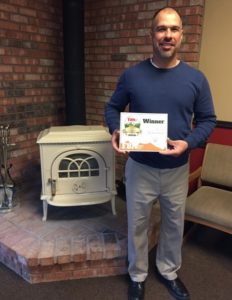 It is never a good time for a foot or ankle injury, but some might consider the colder months to be the most inconvenient time to have their feet or ankles out of commission. Ironically, it is during the winter when many injuries in the lower extremities occur because of weather-related incidents.
It is never a good time for a foot or ankle injury, but some might consider the colder months to be the most inconvenient time to have their feet or ankles out of commission. Ironically, it is during the winter when many injuries in the lower extremities occur because of weather-related incidents.
From ankle sprains to frostbite to broken toes, the damage can vary. However, by taking proper preventive measures, a person can decrease his or her chance of incurring a foot or ankle problem during the colder months. During the winter months, patients should take extra precautions to keep their feet warm and dry when navigating frigid tempuratures, especially patients who have existing health conditions.
In general, most people would do best to take the necessary safety steps to avoid foot and ankle injuries in the winter. However, injury prevention for those who have poor circulation, nerve damage caused by neuropathy or Raynaud’s phenomenon, which is an extreme sensitivity to coldness, can be paramount.
The following are three critical and easy-to-follow tips that can mean all the difference between comfort and pain in your feet during the winter.
1. Wear the Right Shoes
Whether caused by wearing high heels on icy surfaces or just sheer accident, falls are one of the most common causes of weather-related injuries. Wintertime falls often result in an ankle sprain, or worse, a broken bone in the foot, ankle, heel or toe. I encourage patients to wear low-heeled shoes or boots with a traction sole to help prevent slipping. Equally important is wearing warm shoes or boots, which can protect a person’s feet in frigid temps.
Wearing water-resistant, insulated footwear serves as a barrier between the feet and outside elements; this is particularly important for patients with neuropathy or Raynaud’s phenomenon. While different, both conditions block normal blood flow in the feet and place a person at a greater risk of developing additional problems. In some cases, people can incur chilblains, which are itchy, tender, red patches that emerge in response to cold air, or in extreme cases, frostbite. Remember, the thicker the insulation, the greater the protection is between a person’s feet and the adverse effects caused by cold weather.
2. Keep Your Feet Dry
Damp feet can cause cold feet and can be just as harmful. Wearing moisture-wicking socks will help keep feet dry from internal wetness caused by sweat, while water-resistant footwear will ward off external weather elements that can cause dampness.
I encourage my patients to wear appropriate socks as a standard practice during the winter months to guard their feet in both expected and unforeseen inclement weather conditions.
For some, inserting foot warmers in their shoes serves as an extra layer of protection. Before doing so, it is best to consult with a foot and ankle surgeon. If worn incorrectly, foot warmers can burn the skin and cause severe harm for those with nerve damage.
3. Get the Right Help
With all that can happen to the feet and ankles during the winter months, it is best to know what to do when faced with a condition or injury brought on by cold weather.
In the case of a suspected fracture or sprain caused by a fall, see a foot and ankle surgeon or visit the emergency room as soon as possible for prompt diagnosis and treatment. If medical care is unavailable, for temporary relief of symptoms, try the RICE principle – Rest, Ice, Compression and Elevation. But remember, delaying treatment can result in long-term complications.
For feet that are exposed to cold and dampness for a prolonged period, soak them in warm water, but avoid hot water or direct heat. Soaking them in warm water will allow the feet to regain their normal temperature gradually. FBN
By Anthony Rosales, DPM, FACFAS
For more information on keeping your feet, ankles and legs safe in the winter, contact Dr. Rosales.
Anthony Rosales DPM, FACFAS, a foot surgeon with offices in Flagstaff and Page, is board certified in Foot Surgery by the American Board of Foot and Ankle Surgery. He is a member of the American College of Foot and Ankle Surgeons.







